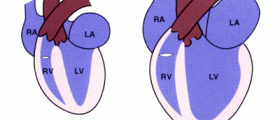
Edema is the medical term that refers to build up of fluid in the body’s tissues. It is visible swelling most commonly seen in the feet, ankles and legs. This is known as peripheral edema. However, it may occur in other body parts too. There are different types of edema. In the following paragraphs we will explain why and how edema develops.
Edema Overview
Edema is a swelling which results from collection of fluid in the space surrounding the tissues of the body. This space is called the interstitial space. Normally, body’s fluids are stored in the blood vessels or interstitial spaces. Depending on the cause, excess fluid may build up in one of these sections.
The interstitial spaces are found throughout the body where fluid may collect. Pulmonary edema occurs when fluid accumulates in the interstitial air spaces in the lungs, or alveoli. Excess fluid may also build up in the abdominal or peritoneal cavity. This edema is called ascites. Collection of excess fluid in the chest, or pleural cavity is known as pleural effusion. Anasarca is generalized edema which develops as extreme widespread swelling of the skin due to accumulation of fluid all of the body’s tissues and cavities.
Pitting and Non-Pitting Edema
Pitting edema is distinguished by depression which develops on the skin and persists for some time, after applying pressure with a finger to the swollen area of the body. This pitting can be caused by any form of pressure such as socks.
Non-pitting edema, on the other hand, does not cause persistent indentation after applying pressure to the skin. This type of edema is commonly seen in the legs or arms. Non-pitting edema can be due to lymphedema, pretibial myxedema and other conditions. Edema and Heart Diseases
Heart failure is always accompanied with edema. This condition is characterized by weak pumping action of the heart leading to decreased volume of blood pumped out by the heart, or cardiac output. This causes decreased blood flow to the kidneys due to which the kidneys retain water and salt.
Heart failure also causes increase in pressure in the veins within the lungs, leading to accumulation of fluid in the alveoli. This excess fluid interferes with normal oxygen flow through the lungs and causes shortness of breath. Collection of fluid in the lungs is known as pulmonary edema.
Left-sided heart failure develops because of weak left ventricle which may result from coronary artery disease, hypertension or heart valve disease. Right-sided heart failure commonly occurs due to chronic lung disease like emphysema and causes swelling in the feet and lower legs.
Cardiomyopathy causes heart failure in which both ventricles are affected. In people with cardiomyopathy, swelling is seen in both the lung and legs.
















Your thoughts on this
Loading...